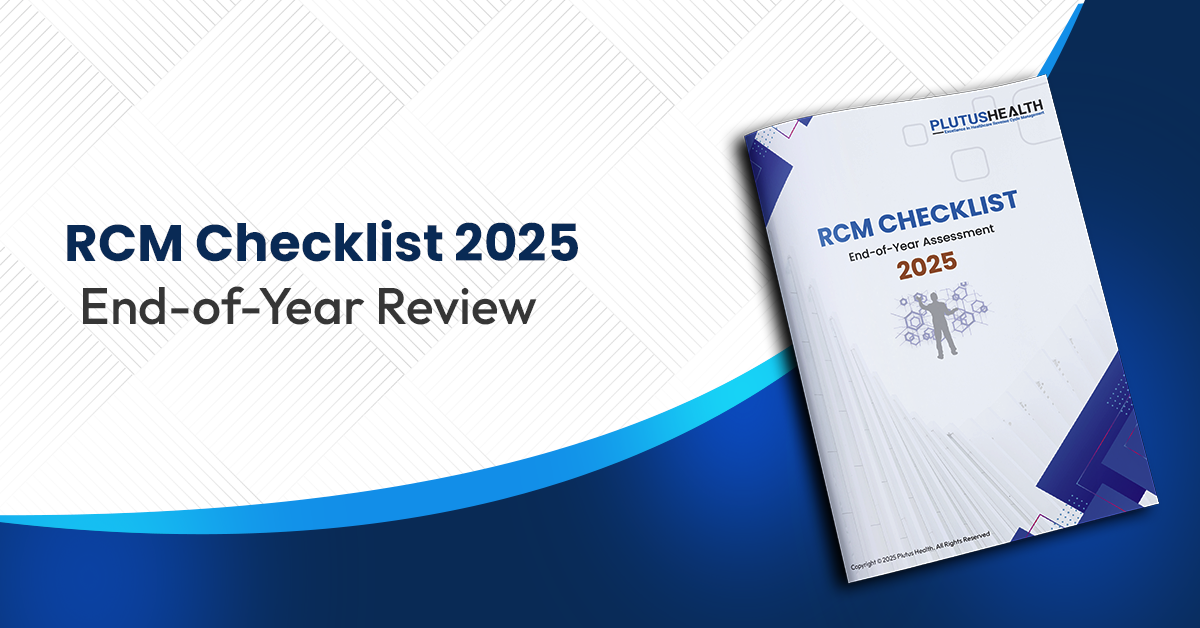Intelligent A/R Strategy: How to use automation and analytics to reduce A/R
In 2021, 49% of surveyed physicians reported an increase in time in accounts receivable (A/R). The longer an invoice is in A/R, the less likely billers will collect. These facts have catapulted the medical field into searching for more effective collection methods.
Researchers have determined technology and data analysis are efficient at improving denial management in healthcare. This combination offers strategic planning and the tools to execute goals.
Here’s how to use automation and analytics to reduce A/R.
Invest in Artificial Intelligence Medical Billing
AI benefits your practice by delivering consistent, speedy results. Well-developed systems will significantly boost accuracy and efficiency. Coding AI will quickly sort through a patient’s records and match services with the appropriate codes. This efficiency relieves staff who can focus on A/R retrieval.
However, modern software still requires human oversight to maximize its potential. Ensure that you allocate experienced workers to oversee machine operations.
Avoid Referring to Single Variable Statistics
Currently, many practices gather basic information and refer to it as analytics. This data may include a patient’s failure to pay or an extended period in A/R.
Unfortunately, this information provides very limited visibility. Even experienced professionals can’t determine the problem's cause based on such limited data. This restriction is why multidimensional analysis is so important. With different dimensions, a provider can determine which variables caused the undesirable outcome.
Incorporate a Multidimensional Analysis
A multidimensional analysis will incorporate multiple variables. Typically, the dimensions include studying a population and tracking results over a period of time (longitudinally). The combination of these elements gives the analysis its multidimensional label.
This method maximizes data gathering because the population provides multiple references. Studying the population longitudinally offers a wider time frame for variables to shift.
Prioritize Accounts
When prioritizing accounts, it’s easy to focus on the longest outstanding balances or high-dollar amounts. However, this approach can be very effective and is overly simplistic. You must ensure that there is a high percentage of success in getting that revenue into your account for those claims reimbursements being delayed or you risk.
Among potentially avoidable denials, 24% are non-recoverable. Other rejections are reclaimable, but have potentially low chances of success are low. Avoid chasing A/R that has low chances of getting a return.
Target Specific Health Metrics
Practices must understand some key averages of clinics in their field. Knowing how this data compares to your metrics will help set the correct course for potential improvements. Here are a few crucial areas to track:
● Denials: Some denials are responsible for significant A/R backlogging. As such, it’s critical to track what characteristics these errors share. Target the highest financially impacted and longest time delays in reimbursement areas where denials consistently occur.
● Staff Productivity: Measure what each staff member does as it relates to A/R reduction. This information will tell you how efficient your staff is given the current processes.
● Net Collections Ratio: This Key Performance Indicator (KPI) provides offers in-depth knowledge into how streamlined he current A/R is being managed and how effective the current A/R process is. It also provides clarity as to which accounts are most efficient to pursue.
Plutus Health has the tools and staff necessary to conduct an in-depth A/R analysis. Our team will work with you to form a realistic, measurable map toward RCM improvement. Then, we deliver regular reports that provide visibility into all the paths toward improvement. Contact us today to realize A/R reduction.
Key Takeaways
1. Incorporate AI as a significant factor in your workflow.
2. Avoid single dimension data.
3. Invest in producing a multidimensional analysis.
4. Prioritize efficient A/R accounts.
5. Determine which metrics are most important and monitor them closely.
Liked the blog? Share it
FAQs


ABA providers are grappling with high staff turnover (up to 65%), rising burnout, administrative overload, and stagnant reimbursement rates. These challenges directly impact care continuity, clinical outcomes, and operational performance.


Operational inefficiency costs ABA teams up to 10 hours per staff member per week, contributing to burnout, denied claims, and longer accounts receivable (A/R) cycles. These inefficiencies ultimately result in reduced revenue and patient dissatisfaction.


Burnout leads to costly turnover, lower client retention, and decreased productivity. Recruiting and replacing a BCBA or RBT can cost up to $5,000 per hire, plus months of lost revenue and disruption to morale.


High-performing ABA organizations invest in clear career pathways for BCBAs and RBTs, align compensation with market benchmarks, and foster peer-led mentorship, flexible schedules, and wellness programs.


Automation tools like Plutus Health's Zeus streamline eligibility verification, denial management, and billing, reducing manual workloads by 5–10 hours weekly per clinician and improving clean claim rates by 95%.


Outsourcing revenue cycle management can improve collections, reduce denials by up to 30%, and free clinicians from billing-related admin tasks, resulting in better client care and financial outcomes.


One $200 million ABA network partnered with Plutus Health to automate eligibility and accounts receivable (A/R) processes. The result: $2M reduction in legacy A/R and a 97% Net Collection Rate.


By improving operational efficiency, investing in technology, and ensuring workforce stability, ABA leaders can align outcomes with reimbursement. Plutus Health supports this transition with scalable RCM and automation strategies.
FAQs


ABA therapy billing is the process of submitting claims to insurance or Medicaid for Applied Behavior Analysis services provided to individuals with autism or developmental disorders. It includes using correct CPT codes, proper documentation, and adherence to payer-specific policies.


Common CPT codes for ABA therapy in 2025 include:
- 97151 – Assessment and treatment planning
- 97153 – Direct therapy with the patient
- 97155 – Supervision and modification of behavior plan
- 97156 – Family adaptive training
- Always check with payers for any annual changes.


To bill Medicaid for ABA services, providers must ensure credentialing is complete, services are pre-authorized, and claims use the correct codes and modifiers. Medicaid requirements vary by state, so always follow state-specific billing rules.


Common ABA billing mistakes include:
- Incorrect or missing CPT codesplan
- Lack of documentation or treatment
- Uncredentialed providers rendering services
- Submitting duplicate or late claims


Without proper credentialing, providers can’t get reimbursed. Insurance and Medicaid require that BCBAs, RBTs, and organizations are credentialed and contracted. Delays in credentialing often cause revenue losses and claim rejections.
FAQs


CMS proposes a 2.4% increase in Medicare ASC payment rates, contingent on meeting ASCQR quality reporting requirements. Plutus Health helps ASCs meet these compliance benchmarks by integrating quality reporting data into RCM workflows, ensuring eligibility for full payment updates.


The ASC Covered Procedures List will expand by 547 procedures, including cardiology, spine, and vascular surgeries. Plutus Health supports expansion into new service lines by customizing RCM processes for high-acuity procedures, minimizing claim denials during the transition.


Site-neutrality narrows the payment gap with hospital outpatient departments, enhancing ASCs' cost-efficiency appeal. Plutus Health helps leverage this advantage in payer negotiations by providing performance dashboards and cost-justification analytics to secure stronger reimbursement terms.


Complex procedures increase denial risk and slow cash flow. Plutus Health's automation-first RCM model delivers 95%+ clean claim rates, reduces A/R days, and safeguards margins, even as your case mix becomes more complex.
FAQs


A hybrid RCM model combines in-house tasks like scheduling, intake, and patient communication with outsourced billing support for claims, denials, and A/R follow-up. Plutus Health enables this model with automation and expert teams.


Frequent CPT code updates, variable session lengths, high no-show rates, and sensitivity around patient collections make behavioral health billing uniquely challenging. Hybrid RCM helps strike a balance between compliance and patient care.


Tasks requiring patient interaction—like intake, eligibility checks, copay collection, and documentation—are best kept in-house, while backend processes can be outsourced.


Outsourcing denial management, claims scrubbing, and payment posting improves clean claim rates, reduces A/R days, and scales capacity without adding staff.


Plutus Health delivers 97%+ clean claim rates, AI-powered denial prediction, and 48-hour claim turnaround. Our hybrid RCM solutions provide behavioral health CFOs with visibility and control, while enhancing financial performance.
FAQs


Payment complexity, high out-of-pocket costs, increasing denials, and value-based care requirements are pushing providers toward more transparent, tech-supported payment systems.


Patients now act like consumers. They expect clear cost estimates, simple bills, digital payment options, and flexible financing.


AI, automation, and digital tools streamline estimates, reduce denials, support payment plans, and allow faster collections through mobile and online payments.


Complex billing questions, insurance confusion, and financial stress require a compassionate approach. Advocates guide patients and protect trust in clinical care.


Plutus Health supports providers with AI-driven denial prevention, predictive analytics, digital payment tools, patient financing, and a seamless platform, such as AnodynePay.


















































